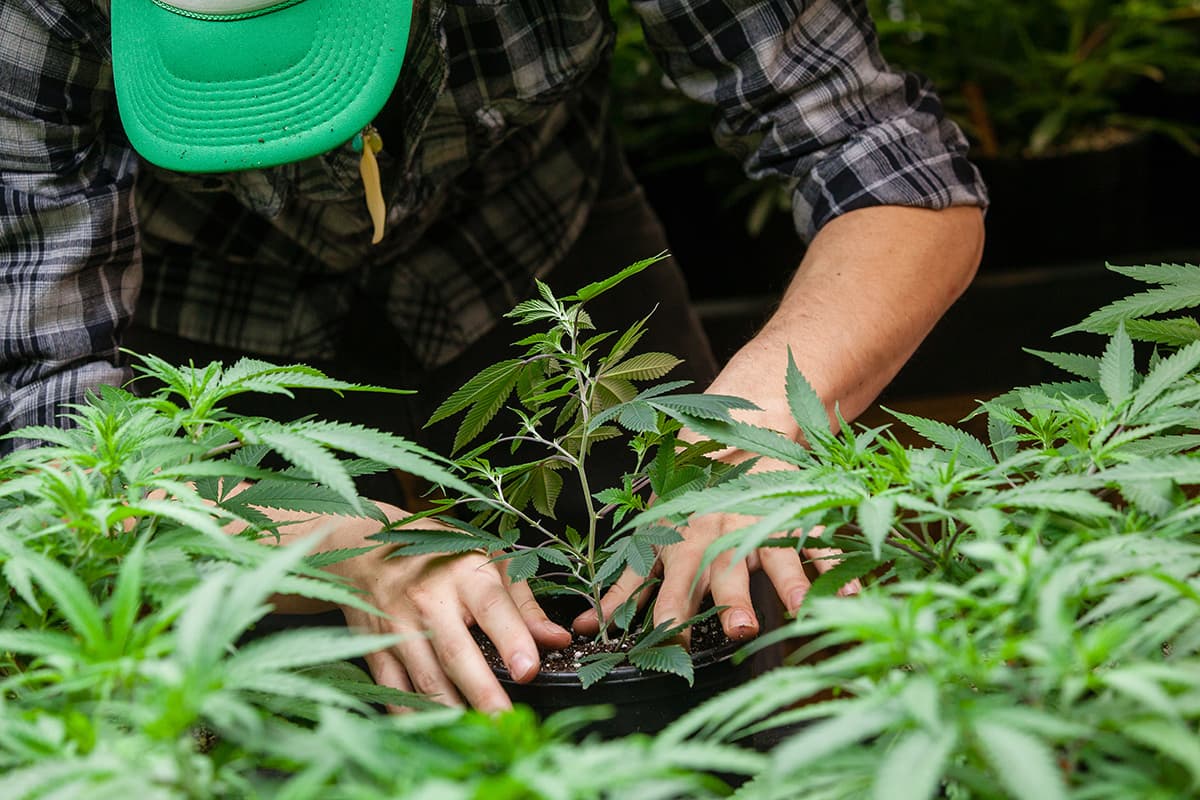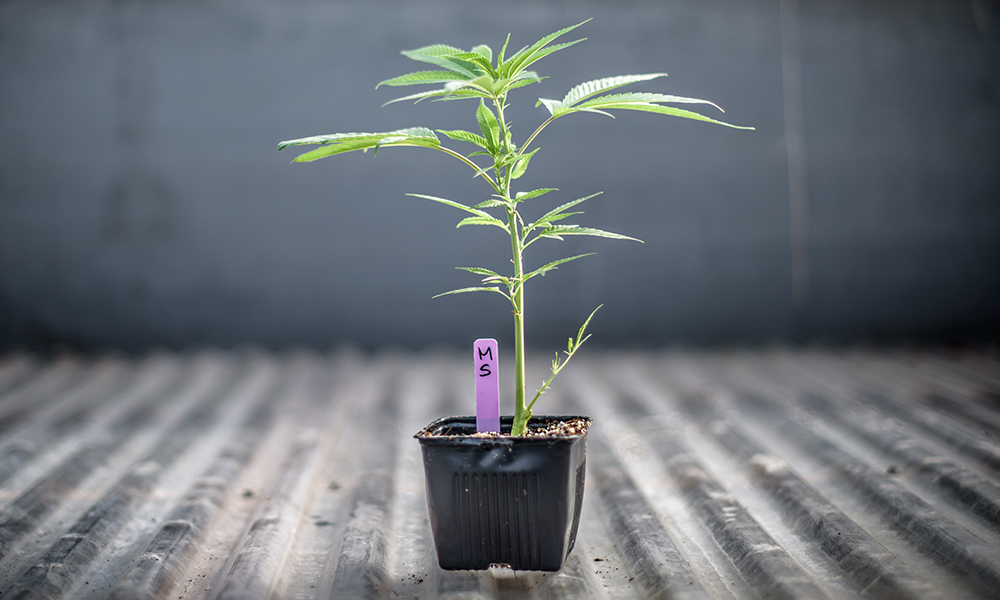By Seasoned Stoner
Before you throw your favorite seeds in a pot and put it under the kitchen light, you’re going to want to educate yourself on how to set up for a successful indoor grow room. Growing cannabis is a time-consuming process that requires patience and education. At CannaCraft our cultivation sites are all outdoors, but we understand that greenhouses and acres of open land are not an option for everyone. And that, my friends, is why we’ve put together the top 5 tips for your personal indoor grow!
These are yours for free. You’re welcome.
1. Location
Similar to real estate, location, location, LOCATION! Precise positioning is essential for growing. Environmental elements such as space, light, temperature, and humidity need to be considered as factors that will affect growth. For beginner growers, we recommend starting small. An area such as a closet or cabinet is the perfect starter space. Keeping the space small allows you to more accurately manage and maintain the plant’s environmental conditions without the burden of making costly mistakes. The larger the room, the higher the number of factors needed to take into consideration. Choosing a small space will minimize the necessity for large and expensive humidifiers, air conditioning, and lights.
2. Environmental Elements
As we said above, when growing cannabis, environmental control is the meat and potatoes. Learning how to adjust elements such as light, humidity, and temperature will enable you to correct conditions in real time, saving your plant and setting up for a great harvest. You’ll also want to become aware of your plant’s indicators signaling that one or more of these elements are off. Identifying your plant’s signals and appropriately modifying the correct element is key to growing a blissful bud.
Lighting.
With so many different options, choosing the right lighting system for your grow room can be overwhelming. Starting off, we recommend fluorescent grow lights, specifically those with high-output (HO) T5 bulbs. These bulbs are perfect for a small plant that will stay under 24 inches tall. Keeping the lights between 1-4 inches away from the top of your plant will help prevent burning. While the seedling is small, set the light closer and as it grows you'll adjust it accordingly.
As a rule of thumb, a good way to know that the light is too close is to place your hand where the top of your plant will be so the back of it is exposed to the light. After ten seconds, if the light feels uncomfortably hot then the light is too close for your plant to prosper. The bulbs we recommended are perfect for maximizing cannabis bud production without creating an abundance of heat. Additionally, investing in a timer will help you regulate changing the light cycle from day to night. The more automated the process, the less chance for mistakes.
Temperature & Humidity.
By controlling the climate of your grow room, you can mimic mother nature’s changing seasons and transition your plant from the vegetative stage to flowering stage. Higher temperatures can cause your plant to wilt while cooler temperatures will slow the growth. The ideal temperature with lights is between 70-85 degrees F. When the lights are off, the ideal temperature is between 58-70 degrees F.
Relatively high humidity, around 60-70%, during the vegetative growth phase can be beneficial; however, once the plant begins to flower, lowering the humidity as much as possible is key--otherwise you risk mold getting into the buds and destroying your beautiful green nuggets. Keeping track of the humidity level on a daily basis is crucial. If it’s too humid, simply set up a dehumidifier and continue monitoring.
3. Soil & Seeds
When selecting soil, any high-quality potting soil will work, as long as it doesn’t contain any artificial extended release fertilizers. Ensure that you never use any soil that has nutrients added. The three nutrients required to grow a healthy cannabis plant are nitrogen, phosphorus, and potassium, which should be naturally occurring in soil.
Now comes the fun part–choosing your seedling! Determining the right strain for you can be a tricky process. Whether you choose an indica or sativa, remember it’s crucial to start with feminized seeds so the cannabis plant will produce buds. Generally, choosing an indica strain is best for beginners because they’re short and bushy, perfect for a small space.
After choosing the right seeds, you need to germinate them. To begin the germination process, simply place your seeds on a wet paper towel with a small amount of sunlight for 24-32 hours. Once your seeds are germinated, poke small holes in the soil about an inch below the surface. Always separate your seeds to give them enough space to grow into full maturity without choking out or restricting one another. Next, plant your seeds in the holes you created and cover them lightly with soil. Alternatively, if you choose to start off with a healthy clone, the rooting process is already complete. These plants can be placed directly into the soil mixture. Be sure to give your newly planted herb a nice amount of moisture. Keeping the soil moist but not soaked will give your seedling the necessary nutrition to grow.
4. Timing Is Everything
Seedling Stage.
As your seedling begins to grow, keep it well-watered, but not flooded. After watering, wait until the top inch of soil feels slightly dry to the touch before watering again. Over watering your cannabis plant can kill it, so be sure to not go overboard.
Vegetative Stage.
After 14 days, your cannabis seedling is ready to go into their vegetative stage. During the vegetative stage, your cannabis plant focuses on getting big and strong. You can expect your cannabis plant will grow leaves and stems but not bud. At this stage, the plants will need at least 18 hours of “daylight.” As stated before, continue regulating the light’s distance to ensure your plant isn’t getting burned as it grows.
Flowering Stage.
The final stage is the flowering stage, where your cannabis plant will bloom beautiful buds. It’s vital that your plant now receives a 12-hour dark period every day until the final harvest. The flowering stage tends to take anywhere from 7 to 9 weeks depending on the strain; however, sativa strains often longer than 9 weeks to produce full sized buds.
5. TLC
As silly as it sounds, don't forget to send your plant some love once in a while. By checking in on your plant, you'll pick up on important signals it could be giving off that it isn't doing well. A happy, thriving plant is beneficial to more than just the final yield--gardening has been proven to be beneficial for humans, as well.

